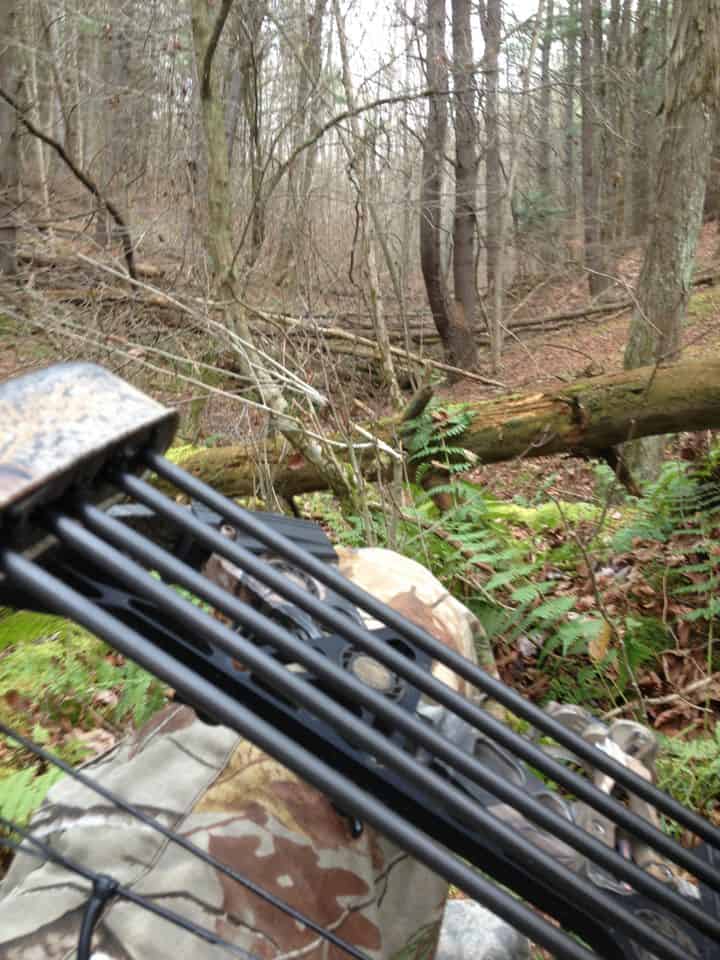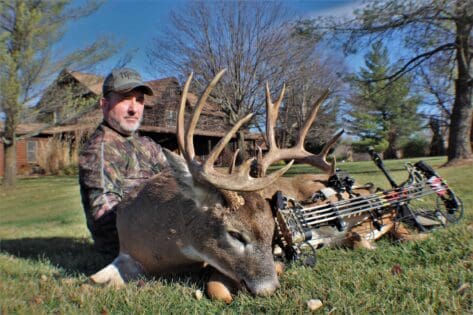Building Brush Blinds for Whitetail Deer Hunting
Where and How to Properly Build a Brush Blind.
 Scrub brush, briars, vines and saplings growing wildly well above the head of a grown person create near impenetrable landscapes for humans to maneuver. Some may refer to such areas of brush as “jungles” and the mushy ground reveals trails so worn with deer sign, one wonders if cattle frequent the area. As often can be the case, deer do not travel where predators have easy vantage points. In such cases when one finds a deer travel Mecca, the trees in the surrounding areas may not be large and mature enough to properly hang a well concealed tree stand, or you may not have a stand available. What do you do? Walk away from the area and hope to catch the deer on the edges of your new found honey hole? Reverting to a bit of childhood innocence and creating a fort, a brush blind blending right into the surrounding landscape may give you chances to hunt otherwise un-huntable areas.
Scrub brush, briars, vines and saplings growing wildly well above the head of a grown person create near impenetrable landscapes for humans to maneuver. Some may refer to such areas of brush as “jungles” and the mushy ground reveals trails so worn with deer sign, one wonders if cattle frequent the area. As often can be the case, deer do not travel where predators have easy vantage points. In such cases when one finds a deer travel Mecca, the trees in the surrounding areas may not be large and mature enough to properly hang a well concealed tree stand, or you may not have a stand available. What do you do? Walk away from the area and hope to catch the deer on the edges of your new found honey hole? Reverting to a bit of childhood innocence and creating a fort, a brush blind blending right into the surrounding landscape may give you chances to hunt otherwise un-huntable areas.
Laying in wait eye level with quarry is nothing new to deer hunters. Challenge, excitement and testing of skill are pushed to an entirely new level as each movement and mistake are magnified without the buffer zone of elevation. While there may not be a right or wrong answer to constructing a good brush blind, finding the best practices to blend inconspicuously into terra firma never hurt the odds already stacked against you on the ground.
Things to look for:
Age old wisdom tells us never to set up directly over a trail in a tree stand but just off to the side. This is even more critical while hunting at eye level with animals. Look to build a structure which avoids being the focus point for a deer as they walk down a trail.
Build around structure: Even if there are large mature trees in the area, sometimes they just won’t work well with a tree stand for a variety of reasons. Keeping in mind to break up your profile as much as possible, a veteran mountain hunter once told me finding one or several large trees which are wider than you are is can save a headache of creating a well broken up background. If no large trees are available, look for downed trees or their root systems to build around.
When constructing a blind, think inconspicuous using only the materials in the immediate area, un natural elements can set deer on alarm. For example, if I am building a blind in a thick stand of pines, I wouldn’t want to incorporate tall grasses to conceal me, it would be out of place thus attracting attention.
Construction:
Use a variety of sizes of sticks and branches weaving them densely to ensure cover and stability. Stack the blind high enough to where you can sit and be able to peek over the edge but have plenty of room to stand and have no interference during the shot. Say you are building near a hedgerow with a plethora of grasses and leafed branches, use them, but remember to not attract attention to the blind. My veteran mountain hunter mentor constructs his in such ways they resemble well concealed ancient dinosaur nests.
Challenging may not be the right word to describe the degree of difficulty being successful from a brush blind can be. Each movement must be taken into careful consideration with each passing moment. Although they may not be considered orthodox by today’s hunting standards, when needed, brush blinds may hold the key to getting in close enough for a shot.
Jason Reid
Last Updated: November 17th, 2013




